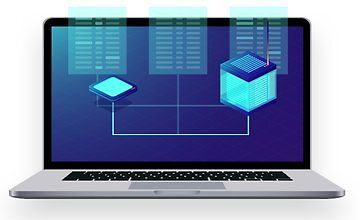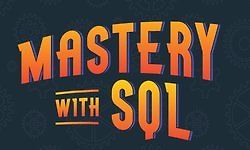
udemy
Udemy - одна из самых больших площадок в мире по доставке обучающего контента от разных авторов всего мира. Присутсвуют курсы практически на любую тему.
SQL - MySQL for Data Analytics and Business Intelligence
Предварительный опыт не требуется. Начнем с самых основ. SQL, который даст вам работу - SQL для бизнес-анализа, маркетинга и управления данными.
Насколько важно управление базами данных в эпоху больших данных и аналитики?
Это действительно важно.
Сколько работодателей были бы рады нанять сотрудников, которые могут использовать данные в целях бизнес-аналитики?
Все.
Сколько людей имеют эти навыки?
Недостаточно.
Вот почему сейчас самое время изучить SQL и получить конкурентное преимущество на рынке труда. Помните, средняя зарплата разработчика SQL составляет $ 92 000! Это прибыльная карьера.
Что дальше?
Что ж, когда вы можете работать с SQL, это означает, что вам не нужно полагаться на то, что другие отправляют вам данные и выполняют запросы за вас. Вы можете сделать это самостоятельно. Это позволяет вам быть независимым и углубляться в данные, чтобы получить ответы на вопросы, которые могут улучшить работу вашей компании. Например, управление базой данных является основой для анализа данных и интеллектуального принятия решений.
Беспокоитесь, что у вас нет опыта?
Ничего. Мы начнем с самых основ и постепенно научим вас всему, что вам нужно знать. Шаг за шагом. Без пропущенных шагов.
Почему именно этот курс? Разве он не похож на остальные курсы SQL?
Мы хотели бы думать, что это не так. Наша команда усердно работала над созданием курса, который:
Мы твердо верим, что этот курс - лучший учебный материал. Это действительно интерактивный опыт, готовящий вас к реальной рабочей среде.

Udemy - одна из самых больших площадок в мире по доставке обучающего контента от разных авторов всего мира. Присутсвуют курсы практически на любую тему.




Программа обучения SQL - первый шаг в профессиональном росте дата саентистов и аналитиков данных в сильных командах и проектах. Уже через 5 лет, по словам экспертов активно развивающихся отраслей (телекома, финтеха, ритейла и мобильных сервисов), без владения SQL невозможно будет вырасти выше уровня junior.

Рассматриваем дополнительные возможности SQL и реляционных баз данных: переменные, транзакции, хранимые процедуры, триггеры и блокировки.

Практический курс для тех, кто хочет изучать современный SQL. Насыщен высококачественными видео, практическими примерами и интересными и сложными упражнениями, чтобы практиковать то, что вы узнали. Курс является широким и глубоким, он берет вас от начального уровня к овладению SQL и делает его таким образом, который создает глубокое понимание того, что вы узнали. Моя цель - дать вам практические инструменты и навыки, необходимые для выполнения ва

Этот курс превратит вас в мастера запросов SQL. Вы узнаете, какие навыки вам нужны, чтобы извлечь критическую информацию из данных, сидящих в базе данных. Есть более 100 головоломок, разбросанных по всему курсу с помощью углубленных решений, предоставляющих вам много возможностей для практики. После завершения курса и всех его заданий, я обещаю вам, вы никогда не будете бояться снова смотреть на большой SQL-запрос.

Большие базы данных повсюду в наши дни. Facebook, Netflix, Uber, Airbnb используют базы данных на основе SQL - и это лишь некоторые из них. Итак, чтобы быть успешным разработчиком или специалистом по данным, вам нужно знать SQL наизнанку.